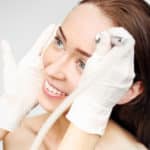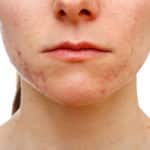10 Simple Ways to Minimize your Skin Cancer Risk This Summer
Skin cancer is the most common form of all cancers, with melanoma being a particularly dangerous and deadly form of cancer. According to the American Cancer Society, melanoma may account for less than 2% of all skin cancer cases, but it causes a majority of skin cancer deaths. And melanoma rates have been rising in the past thirty years.
The message? You need to take skin cancer prevention seriously.
This summer, make it your #1 rule to protect yourself and your family from ultraviolet (UV) radiation, every day, not just while you’re at the beach. Here are ten easy ways to help protect against skin cancers of all kinds, including deadly melanoma:
-
- 1. Apply sunscreen religiously. Invest in a high-quality sunscreen of SPF15 or higher, with both UVA and UVB protection in the formula. Your dermatologist can help you create a sunscreen plan, such as purchasing and applying sunscreen on your skin, scalp, lips, ears, hands and anywhere else you’re exposed to the sun.
2. Re-apply sunscreen. Follow your dermatologist’s instructions, as well as the application timing advice on your sunscreen products, to keep that protective layer of SPF going strong throughout your time outdoors. If you’ll be swimming, or sweating, you may need to reapply more often. Some formulas advise complete reapplication of sunscreen every two hours.
3. Know when UV rays are highest. You might still be operating under your former teenage self’s beliefs about when sun is ‘peak,’ but if you judged by when you felt the most heat from the sun, you may be putting yourself in danger now. The peak hours for UV rays are between 10am and 4pm Daylight Savings Time, and 9am to 3pm standard time. These are the most hazardous hours for UV exposure outdoors. Late spring is within peak time so protect your body from skin cancer risk during the Spring also. Avoid the sun during these peak hours.
4. Treat overcast days like sunny days. UV rays can still reach you when it’s overcast or cloudy. Just because you’re not looking up at cloud-free sky doesn’t mean you’re safe from skin cancer-causing UV rays.
5. Be wary of sun reflection. UV rays bounce off of surfaces like water, sand, snow and cement, exposing you to harmful rays and increasing skin cancer risk if you’re not well-applied with sunscreen at all times.
6. Avoid tanning booths. Indoor tanning exposes you to harmful UV rays and increases your skin cancer risks.
7. Cover up. Wear UV-protection clothing such as long-sleeve surfer shirts while poolside, on the beach, or enjoying other summertime activities. Wide-brimmed hats are also a great idea for women as well as men. Be sure to choose hats specifically made of UV-shielding materials to keep your head safest from skin cancer risk.
8. Wear wraparound sunglasses, and make sure they’re well-rated to guard against 99% to 100% of UVA and UVB rays.
9. Seek shade. If you have to be outside, such as at your child’s sporting event or at a wedding, position yourself under the full shade of a tree or bring an umbrella to help protect yourself from skin cancer-causing UV rays. Teach your sunscreen-applied kids to do the same when they have to be outside during peak hours, to help protect them from skin cancers as well.
10. Talk to your dermatologist about your skin cancer risks, and get regular skin cancer checkups so that an expert eye can check out moles or marks on your skin, and get a better look at the backs of your legs, your ears, the back of your neck and other parts of your body that you can’t see very easily. As you chat with your doctor, be sure to share information on any severe sunburns you had in the past, since this raises skin cancer risk. If other members of your family have had skin cancers, your dermatologist needs to know that, too, to better guide you in your skin cancer prevention steps year-round.
11. Fortunately, all skin cancers are highly treatable if found early. So during summer when you’re showing more skin, ask your partner to keep an eye out for any moles or marks on your back, so that you can make an early and proactive appointment with your dermatologist.
12. And if you head out to the beach, or to a summertime party or event and forget your sunscreen? Stop off at a store to pick some up. There’s no such thing as a safe exposure to UV rays, and it’s far less of a hassle to buy a new sunscreen spray or bottle than it is to undergo many months of tests and treatments for skin cancers, some of which can be deadly.





